The full database engine should be installed with all components, including the full-text search option before Noodle is installed. (Noodle will install PostgreSQL if it finds no other local DBs, but that can be removed if a remote DB is preferred)
Make sure you have Microsoft SQL Server 2012 or later installed. Download here. EOL dates here.
- Create a Database
- Open up the MSSQL Enterprise Manager.
- Connect to the database engine that will be used for Noodle.
- Right-click on the folder and select Create Database.
- A new window will open to configure the database, Specify the name: intranet.
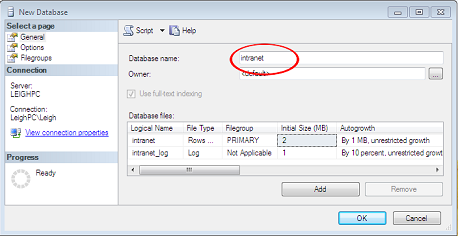
- Creating a Login
- Expand the Security section and right-click on Logins then New Login.
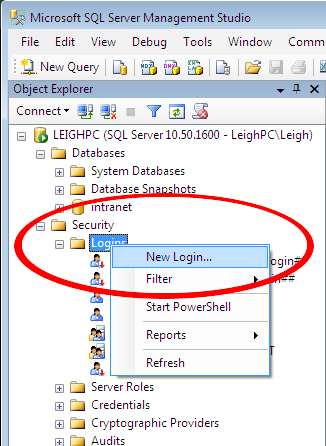
- Login Name: noodleuser
- SQL Server Authentication
- Password: noodlepass
- Do not enforce password policy (at least don't require change or expire)
- Default Database: intranet
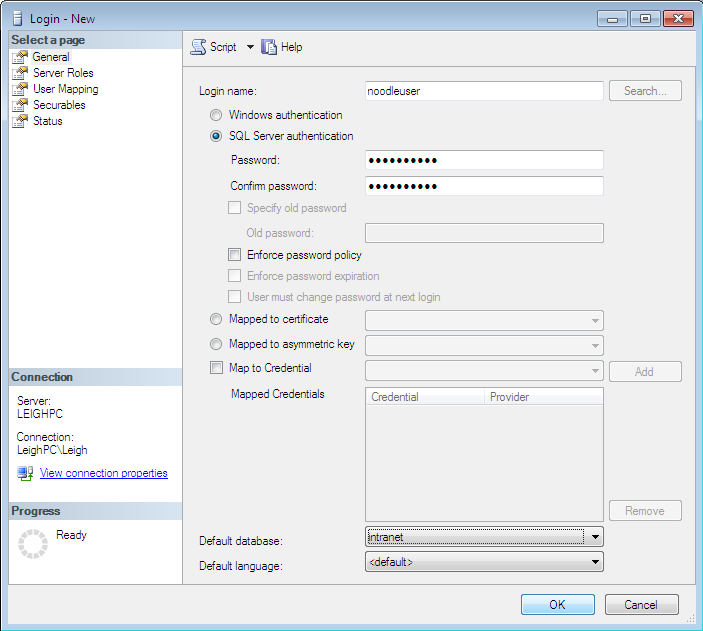
- Set User Mapping of the intranet database to db_owner
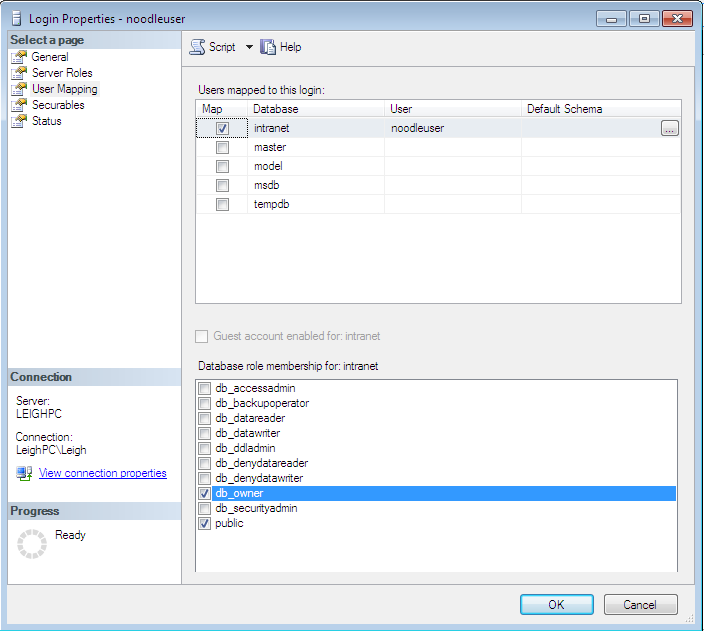
- Enable TCP/IP Settings
- Right click on the instance and select properties, security, than select SQL Authentication

- Open the Sql Server Configuration Manager and expand SQL Server Network Configuration. Select Protocols for MSSQLSERVER, enable TCP/IP.
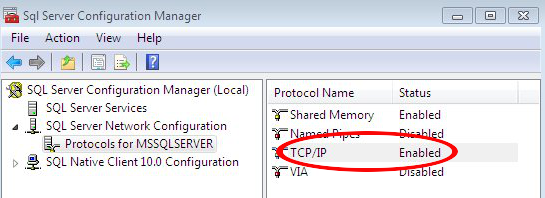
- Right-click to reveal properties, ensure one IP# is set as 127.0.0.1
- For all IP#s using 127.0.0.1 and the IPAll set the port to 1433, and blank out the dynamic port.
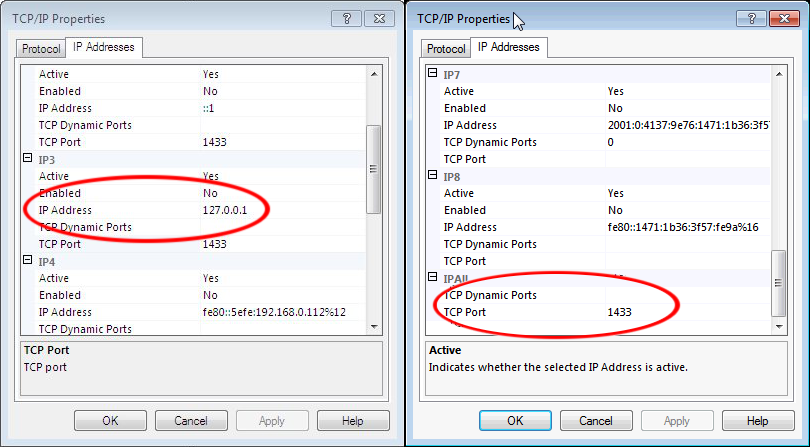
- Restart the MSSQL service
- Install Noodle
- Configure Noodle
- Edit the "noodle.properties" file in the "C:\Program Files (x86)\Noodle\conf" folder
- Verify the user, and pass
- Uncomment (#) from the MSSQL lines and comment any other databases
- Close and save changes.
- restart the noodle service
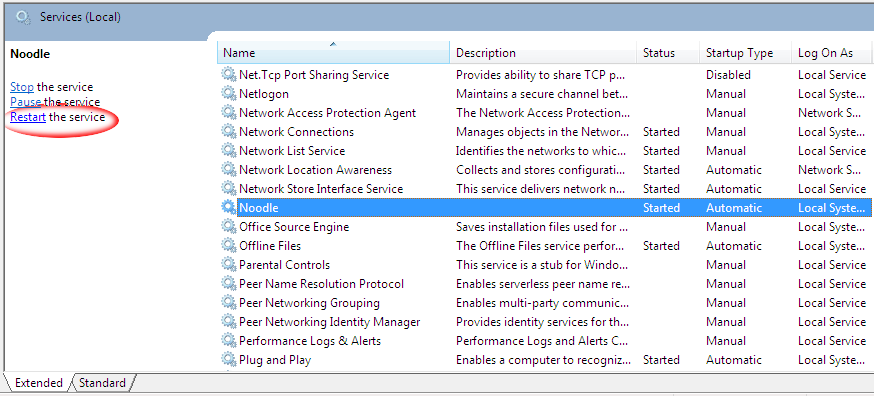
- Open a web browser (preferably chrome), go to the IP and port (http://127.0.0.1:81 is the default), and paste in your license key.







